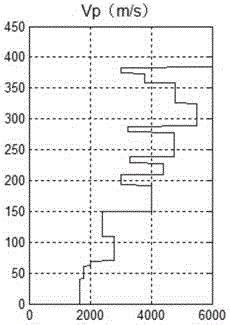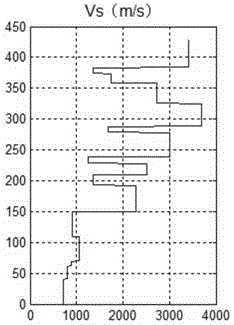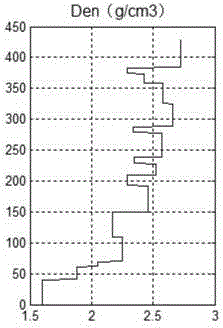Anisotropy parameter inversion method based on transmission equation
An anisotropic and parameter inversion technology, applied in the field of geophysical inversion, can solve the problems that the accuracy of velocity analysis is difficult to meet the needs of the method, the influence of anisotropic parameters on transmission errors, and many errors in picking up residual time differences, etc., to reach the input data range Controllable, high signal-to-noise ratio, high stability effect
- Summary
- Abstract
- Description
- Claims
- Application Information
AI Technical Summary
Problems solved by technology
Method used
Image
Examples
Embodiment Construction
[0041] Below in conjunction with accompanying drawing, the present invention is described in further detail:
[0042] At present, most anisotropic parameter inversions are based on the simplified Ruger reflection coefficient equation, and the approximation or simplification process introduces errors, while the Ruger transmission equation and the reflection coefficient equation have the same anisotropic characteristics. Therefore, the present invention obtains the anisotropy parameter Δδ based on the complete Ruger transmission coefficient equation (V) , Δε (V) Theoretically, the solution does not introduce errors, and the calculation results are more accurate, and has the advantage of post-stack inversion. The inversion results can be used in hot fields such as fracture prediction and shale gas prediction.
[0043] Based on the complete Ruger transmission equation, the present invention calculates the anisotropy parameter ε (V) ,δ (V) , the method is suitable for HTI (trans...
PUM
 Login to View More
Login to View More Abstract
Description
Claims
Application Information
 Login to View More
Login to View More - R&D
- Intellectual Property
- Life Sciences
- Materials
- Tech Scout
- Unparalleled Data Quality
- Higher Quality Content
- 60% Fewer Hallucinations
Browse by: Latest US Patents, China's latest patents, Technical Efficacy Thesaurus, Application Domain, Technology Topic, Popular Technical Reports.
© 2025 PatSnap. All rights reserved.Legal|Privacy policy|Modern Slavery Act Transparency Statement|Sitemap|About US| Contact US: help@patsnap.com



